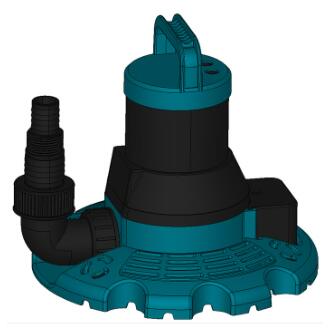Garden Irrigation Water Pumps: A Guide to Efficient Watering for Your Garden
2025-01-14
When it comes to maintaining a healthy garden, one of the most critical aspects is ensuring your plants receive an adequate and consistent supply of water. A reliable garden irrigation system can save time, money, and effort, especially during dry spells or when you have a large garden to tend to. Among the key components of such systems is the garden irrigation water pump. In this blog, we'll explore the importance of water pumps for garden irrigation, types of pumps available, and how to choose the right one for your garden.
Why Do You Need an Irrigation Water Pump?
Watering your garden manually can be a time-consuming and inefficient process, particularly for larger gardens or areas with uneven terrain. A water pump automates and enhances your irrigation system, ensuring that water is delivered efficiently to your plants, even if they are far from a water source.
Here are some of the primary benefits of using a water pump for garden irrigation:
- Consistent Watering: A pump ensures that your garden receives a steady flow of water, which is essential for plant health.
- Increased Efficiency: You can set up automated watering systems that reduce water wastage, making the most of the available water supply.
- Time-Saving: Automated irrigation systems with pumps reduce the time you need to spend watering by hand.
- Water Conservation: A pump allows you to better control the water distribution, helping you use water more efficiently, especially in areas with water restrictions.
Types of Garden Irrigation Water Pumps
There are several types of water pumps used for garden irrigation, each suited to different needs and water sources. Here are the most common options:
1. Submersible Pumps
Submersible pumps are placed underwater and work by pushing water to the surface. These pumps are often used in wells, ponds, or water tanks. They are ideal for areas where the water source is deep, as they can handle substantial water lifts. Submersible pumps are efficient and typically quieter than other types.
- Ideal for: Deep wells, ponds, and reservoirs.
- Advantages: Quiet operation, energy-efficient, capable of high-pressure output.
2. Surface Pumps
Surface pumps are placed on dry land and draw water from a water source, such as a stream, pond, or shallow well. These pumps are more accessible and easier to maintain than submersible pumps but are not ideal for very deep water sources.
- Ideal for: Shallow wells, ponds, and garden water tanks.
- Advantages: Easy to maintain, versatile, and can be used for larger areas.
3. Jet Pumps
Jet pumps are a type of surface pump that uses suction to lift water from a well or other water source. They are powerful and can draw water from moderate depths. Jet pumps can handle a range of garden irrigation tasks, from watering flower beds to supplying larger irrigation systems.
- Ideal for: Shallow to moderately deep wells, garden irrigation.
- Advantages: Reliable, high-pressure output, versatile.
4. Booster Pumps
Booster pumps are designed to increase water pressure within an existing irrigation system. If you have a low-pressure water supply, a booster pump can help ensure that your irrigation system works efficiently, distributing water evenly across your garden.
- Ideal for: Homes with low water pressure or systems that need more pressure for even distribution.
- Advantages: Improves water pressure, cost-effective for enhancing existing systems.
Factors to Consider When Choosing a Garden Irrigation Pump
When selecting a garden irrigation water pump, it’s essential to consider several factors to ensure you choose the right model for your needs.
1. Water Source
Determine where the water will come from (well, pond, rainwater tank, or municipal supply). The depth of the water source and the distance the water must travel to reach your plants will influence your pump choice.
2. Water Volume
Consider how much water your garden needs, both in terms of the flow rate (liters per minute or gallons per minute) and the total volume for the irrigation system. Larger gardens or systems with multiple sprinkler zones may require a pump with higher capacity.
3. Pressure Requirements
The water pressure determines how far water can be pushed through pipes or hoses and whether it can reach higher points in your garden. If your garden has a lot of elevation changes, you may need a more powerful pump to maintain pressure.
4. Energy Efficiency
Choose a pump that is energy-efficient to save on electricity costs over time. Some modern pumps come with built-in sensors to optimize energy use by adjusting the flow according to demand.
5. Durability and Maintenance
Since the pump will be exposed to outdoor conditions, look for models that are weather-resistant and durable. Check the maintenance requirements of the pump as well—some pumps are self-priming, while others may need occasional servicing to stay in top condition.
Tips for Using Your Garden Irrigation Water Pump
- Regular Maintenance: Clean the pump and irrigation system regularly to prevent clogging from debris, leaves, or dirt.
- Check for Leaks: Inspect hoses and connections for leaks, which can waste water and reduce system efficiency.
- Set a Timer: Pair your pump with an automated irrigation system and timer to ensure water is delivered only when necessary, preventing overwatering.
- Use a Filter: If drawing water from a pond or well, use a filter to remove debris that could clog the pump and irrigation lines.
Investing in a garden irrigation water pump is one of the best ways to ensure your garden thrives, especially during dry weather or if you have a large space to water. By selecting the right pump for your water source, garden size, and pressure needs, you can create a more efficient and sustainable irrigation system.



